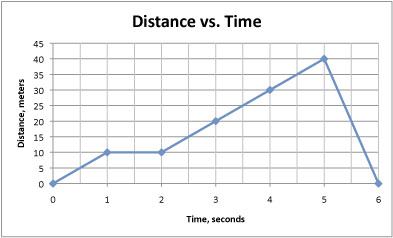

Source of were few source of errors in this lab, first there could have been an error due to the resistance in air affecting the time of fall, also variations of height (altitude) could have influenced the pressure of air and therefore adding another force to the system, and firmly other forces such as possible magnetic or electric forces were disregarded. experiment could have been done better if more exact results were required, then the other variables need to be controlled such as air conditions, altitude and presence of other intervening forces has to be measured and controlled. Refer to the calauctions under data for the F and the error propagation. Calculate the F and the Error Propagation. Acceleration 9 9 9 9 9 9 (average of the 6 above done in excel) 0 (standard deviation of the mean) Yes, I did get a fairly close accepted value to Find the standard deviation in the excel typing and hit enter, Refer to the results in the table above. Record these values in a new table and find the average in excel typing to find the average of 6 trials. Part data analysis: Reproducibility and Distributions: Compare equation 1 to 6 and see that the value of slope is considered as acceleration.
#DISTANCE VS TIME GRAPH PHYSICS DATA TRIAL#
Also, use the data from last trial and make an graph of distance vs time and include the trendline and use appropriate units. Add to each trial, m is slope and y is y intercept. For each trial fit to the best line fit and do linear and add the trendline to the plot. Part II: Plotting the data in excel: Open excel and make scatter plot of velocity vs time and then click on the plot and choose select data and add to the other runs. Open PASCO on the computer and open hardware setup menu on the left and select the correct input. Test if the photogate is working properly checking the red indicator on the back of the photogate, if the light blinks it is working properly if it is not blinking check the power button. Refer to other inputs for future reference. Connect the photogate to digital input 1 to the PASCO interface. In order to avoid the damage that can happen to the picket fence use foam pad for smooth landing. Procedure: Part I: Experimenting with Capstone: Set up the photgate on the edge of the table, refer to figure 1. This will be done making an object fall 6 times and comparing and contrasting the slope of each trial, the slope should be around Computer with PASCO interface and PASCO with the capstone surface,and the photogate on a stand, and lastly the picket fence. The graphs must be consistent with each other and help interpret the calculations.Preview text Physics Fence Introduction: purpose of this lab was to measure the acceleration means of two methods, position vs time graphs analysis and the speed vs time analysis which helped to determine the acceleration.

This analysis of comparing the graphs of position, velocity, and speed helps catch errors in calculations. The slope of x( t) is decreasing toward zero, becoming zero at 0.5 s and increasingly negative thereafter. We can also interpret velocity as the slope of the position-versus-time graph. But in (c), however, its speed is positive and remains positive throughout the travel time.

The particle’s velocity at 1.0 s in (b) is negative, because it is traveling in the negative direction. At 1.0 s it is back at the origin where it started. The reversal of direction can also be seen in (b) at 0.5 s where the velocity is zero and then turns negative. In (a), the graph shows the particle moving in the positive direction until t = 0.5 s, when it reverses direction. By graphing the position, velocity, and speed as functions of time, we can understand these concepts visually Figure. The speed gives the magnitude of the velocity. The velocity of the particle gives us direction information, indicating the particle is moving to the left (west) or right (east). The instantaneous velocity at a specific time point Like average velocity, instantaneous velocity is a vector with dimension of length per time.


 0 kommentar(er)
0 kommentar(er)
